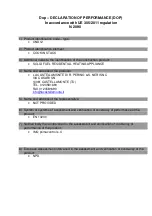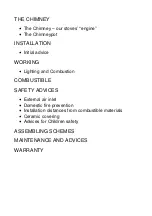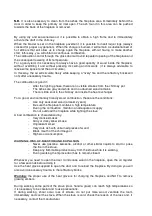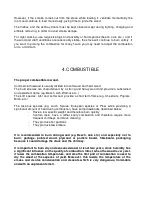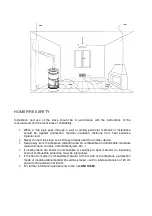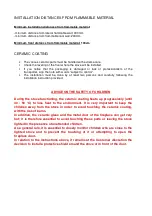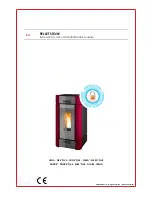
Please read this manual before installing and lighting the stove.
If you have any doubt, please contact the selling Firm.
1.THE CHIMNEY
Our stoves’ “engine”.
The chimney is a key element for the optimal functioning of our stoves.
General rules:
-
Each device must have its own chimney to the roof, adequately insulated, through
which the smoke will flow outside, through natural draft;
-
Each device must be separeted from combustible or flammable materials (wooden
roofs, matchboards and any plastic pipes) through a suitable insulating material,
for at least 30 cm all around. The insulation is also recommended when the
chimney is installed inside a masonry. This will prevent the cold ait from creeping
between the steel pipe and the wall. All the more reason, a good insulation will be
needed in case of passage in an open floor.
-
If the chimneypot is installed on a roof lower than a higher nearby roof, the
distance must be > 5 meters. (FIG. 2 C)
-
The inner section of the chimney shall be uniform and without narrowings, possibly
round shaped, with smooth walls and corners not any higher than 45°.
-
The section of the chimney must be bigger than the diameter of the stove smoke
pipe. For our stoves we recommend a chimney diameter from 160 mm to 180 mm
and a chimney height of not less than 2,5 meters.
-
The connection between the stove smoke pipe and the chimney in the wall must
be done through a pipe fitting (90° or 135°). Moreover, the connection must not
have more than two 90° bends and it must have an horizontal lenght of no more
than 2 meters with a gradient of 5%. We recommend that the chimney is equipped
with a condensate and soot collection chamber, which shall end with an airtight
door, accessible for cleaning. This will avoid unpleasant smells, bad draft and
frequent cleaning of the stove.
Summary of Contents for COOKIN STACK
Page 6: ...FIG 2 A FIG 2 B FIG 2 C ...
Page 8: ...FIG 2 E ...


